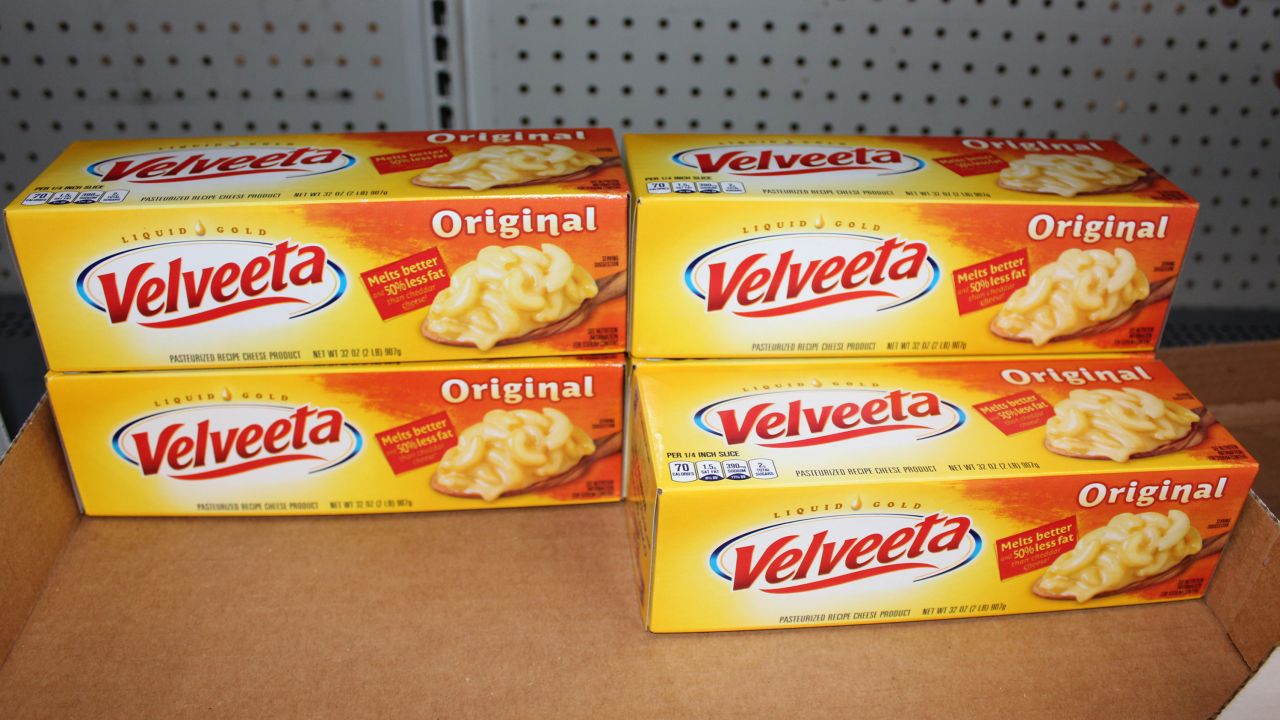

Articles
How To Store Gruyère Cheese
Modified: January 6, 2024
Learn the best methods for storing Gruyere cheese, including tips on temperature, moisture, and packaging. Read more in our informative articles!
(Many of the links in this article redirect to a specific reviewed product. Your purchase of these products through affiliate links helps to generate commission for Storables.com, at no extra cost. Learn more)
Introduction
Gruyere cheese is a beloved Swiss cheese renowned for its nutty and savory flavor. Whether you’ve just bought a large chunk of Gruyere or have some leftovers from a delicious meal, knowing how to store it properly is essential in maintaining its freshness and quality.
In this article, we’ll guide you through the process of storing Gruyere cheese to ensure its longevity and to preserve its delightful taste and texture. From choosing the right Gruyere cheese to proper wrapping and packaging techniques, as well as optimal storage conditions and even freezing methods, we’ll cover all the essential information you need to know.
By following these guidelines, you’ll be able to enjoy delicious Gruyere cheese whenever you desire, whether it’s in a gourmet sandwich, a homemade quiche, or simply as a delightful snack.
Key Takeaways:
- Proper storage of Gruyere cheese is crucial for maintaining its flavor and quality. From choosing the right cheese to temperature and humidity guidelines, wrapping techniques, and freezing methods, these steps ensure a delightful cheese experience.
- Freezing Gruyere cheese can extend its shelf life, but proper thawing is essential to preserve its texture and flavor. Whether using the refrigerator, cold water, or microwave thawing, follow these techniques for optimal results.
Choosing the Right Gruyere Cheese
When it comes to storing Gruyere cheese, it’s important to start with a high-quality cheese from a reputable source. Look for Gruyere cheese that is aged for at least 6 months for optimal flavor and texture. The aging process allows the cheese to develop its distinctive nutty taste and rich aroma.
Additionally, consider opting for Gruyere cheese that is made from raw milk rather than pasteurized milk. Raw milk Gruyere cheese tends to have a more complex and pronounced flavor profile.
When purchasing Gruyere cheese, try to buy a whole block rather than pre-cut slices. This allows you to have more control over the storage process and ensures that the cheese remains as fresh as possible for a longer period.
Lastly, consider the intended use of the Gruyere cheese. If you plan to use it primarily for cooking or melting, you can opt for a younger Gruyere cheese with a milder flavor. However, if you prefer to enjoy the cheese on its own or in cheese platters, go for an aged wheel with a more robust flavor.
Temperature and Humidity Guidelines
Gruyere cheese is sensitive to temperature and humidity, so it’s important to store it in the right conditions to maintain its quality. Ideally, Gruyere cheese should be stored at a temperature between 34°F (1°C) and 39°F (4°C).
Avoid storing Gruyere cheese in the warmest parts of your refrigerator, such as the door or the top shelf, as these areas tend to experience temperature fluctuations. It’s best to store it in the colder sections, such as the middle or bottom shelf.
Humidity is also a crucial factor in preserving the integrity of Gruyere cheese. The ideal humidity level for storing Gruyere cheese ranges between 85% and 95%. The moist environment helps prevent the cheese from drying out and developing a hard texture.
If your refrigerator has adjustable humidity controls, set it to a higher level to create the right environment for storing Gruyere cheese. If your refrigerator doesn’t have this feature, you can mimic the desired humidity level by adding a small humidifier or a damp cloth to the cheese compartment.
It’s worth noting that Gruyere cheese has a natural rind that acts as a protective layer. However, if the cheese has been cut or if there are visible signs of mold or decay on the rind, it’s best to remove these portions before storing the cheese to prevent the spread of bacteria or spoilage.
Wrapping and Packaging
The proper wrapping and packaging of Gruyere cheese are crucial to prevent moisture loss and protect it from odors in the refrigerator. Here are some guidelines to follow:
- Wrap the Gruyere cheese in a breathable material such as wax paper or cheese paper. These materials allow the cheese to maintain its moisture while still allowing it to breathe.
- Avoid using plastic wrap or aluminum foil directly on the Gruyere cheese, as this can trap moisture and cause the cheese to become slimy or develop off flavors.
- If you don’t have cheese paper or wax paper, consider wrapping the cheese in parchment paper as a temporary solution. Parchment paper provides some breathability and helps protect the cheese from drying out.
- Ensure that the wrapping completely covers the entire surface of the cheese to prevent exposure to air, which can lead to the cheese drying out or developing a crust.
- Label the wrapped Gruyere cheese with the date of purchase or storage to keep track of its freshness.
After wrapping the Gruyere cheese, place it in an airtight container or plastic bag to further protect it from external odors and moisture. This step is especially important if you have other strong-smelling foods in your refrigerator that could influence the flavor of the cheese.
Remember, the packaging materials should be clean and odor-free to avoid any transfer of unwanted flavors or smells to the cheese.
Storing Gruyere Cheese in the Fridge
The refrigerator is the most common place to store Gruyere cheese, as it provides a controlled environment to keep the cheese fresh. Here are some tips to effectively store Gruyere cheese in the fridge:
- Keep the wrapped Gruyere cheese in the vegetable or cheese drawer of your refrigerator. These compartments usually have a slightly higher humidity level, which helps maintain the cheese’s moisture.
- Avoid storing Gruyere cheese in the same area as strong-smelling foods, as it can absorb odors and affect its flavor. If possible, designate a separate area just for cheese storage.
- To prevent the cheese from drying out, check the wrapping regularly and replace it if it becomes damp or starts to lose its moisture.
- If you notice any mold or signs of spoilage on the cheese, discard the affected portions immediately to prevent further contamination.
- Try to consume Gruyere cheese within a week of opening it for optimal flavor and quality. The longer it sits in the refrigerator, the more it can start to lose its distinct characteristics.
Remember to handle Gruyere cheese with clean hands or utensils to minimize the risk of introducing bacteria. Also, ensure that the cheese is tightly sealed after each use to maintain its freshness.
By following these storage guidelines, your Gruyere cheese will stay flavorful and enjoyable for an extended period.
Store Gruyere cheese in the refrigerator in a sealed container or wrapped in wax paper to prevent it from drying out. Keep it away from strong-smelling foods to avoid absorbing unwanted flavors.
Freezing Gruyere Cheese
Freezing Gruyere cheese is a great option if you have a surplus or want to extend its shelf life. However, it’s important to note that freezing can alter the texture of the cheese, so it’s best to use frozen Gruyere cheese in cooked dishes rather than for snacking or eating on its own.
Here’s how to properly freeze Gruyere cheese:
- Begin by cutting the Gruyere cheese into smaller, manageable portions. This will make it easier to thaw and use as needed.
- Wrap each portion of the cheese tightly with plastic wrap to ensure there is no air exposure. Then, place the wrapped portions in a freezer-safe container or zip-top bag.
- Avoid stacking the portions on top of each other to minimize the risk of them sticking together.
- Label the container or bag with the date of freezing to keep track of its freshness.
- Place the Gruyere cheese in the freezer, ideally in a section where it won’t be subject to temperature fluctuations.
Frozen Gruyere cheese can be stored in the freezer for up to 3 months without significant loss of flavor or quality. Beyond that, the texture and taste may start to deteriorate.
When you’re ready to use the frozen Gruyere cheese, thaw it slowly in the refrigerator. This will help preserve its texture and prevent it from becoming crumbly. Avoid thawing Gruyere cheese at room temperature, as this can cause it to become soggy and lose its desirable qualities.
Once thawed, the cheese is best used in cooked dishes like casseroles, gratins, or sauces. The texture may not be ideal for eating on its own, but it will still lend its delicious flavor to your favorite recipes.
By following these freezing and thawing techniques, you can enjoy the taste of Gruyere cheese even after an extended period.
Proper Thawing Techniques
Thawing Gruyere cheese properly is essential to maintain its quality and flavor. Here are some recommended techniques:
1. Refrigerator Thawing: The best way to thaw frozen Gruyere cheese is to transfer it from the freezer to the refrigerator. Place the wrapped cheese in the refrigerator and let it thaw slowly overnight or for at least 24 hours. Thawing in the refrigerator ensures a gradual thaw, allowing the cheese to retain its texture and flavor.
2. Cold Water Thawing: If you need to thaw the Gruyere cheese quickly, you can use the cold water thawing method. Place the frozen cheese in a sealed plastic bag and submerge it in a bowl of cold water. Change the water every 30 minutes to ensure the temperature remains consistent. It’s important not to use warm or hot water, as it can lead to undesirable changes in the cheese’s texture. This method can take anywhere from 30 minutes to a couple of hours depending on the size and thickness of the cheese.
3. Microwave Thawing: While not ideal, you can also use the microwave to thaw Gruyere cheese. However, exercise caution as microwaving cheese can cause it to become rubbery or develop hot spots. Wrap the frozen cheese in a microwave-safe container or cover it with a microwave-safe plate or plastic wrap. Set the microwave to the defrost or low power setting and microwave in short intervals, checking the cheese’s texture between each interval to ensure it doesn’t overcook.
Regardless of the thawing method you choose, it’s important to not refreeze Gruyere cheese once it has thawed. Refreezing can significantly affect the texture and flavor of the cheese.
After thawing, it’s recommended to consume the Gruyere cheese within a few days for the best taste and quality. Store any leftovers in the refrigerator and use them in cooked dishes to make the most of the thawed cheese.
By following these proper thawing techniques, you can enjoy the full flavor and texture of Gruyere cheese after it has been frozen.
Storing Gruyere Cheese in a Cheese Vault
If you’re a true cheese enthusiast, you may consider investing in a cheese vault for storing your Gruyere cheese. A cheese vault is designed to create the optimal conditions for cheese storage, including temperature and humidity control. Here’s how to store Gruyere cheese in a cheese vault:
- Choose a cheese vault that offers temperature control within the range of 50°F (10°C) to 55°F (13°C). This temperature range allows Gruyere cheese to mature and develop its flavors while still maintaining its quality.
- Ensure that the cheese vault also has humidity control settings. Ideally, the humidity should be kept between 80% and 90% to prevent the cheese from drying out or becoming too moist.
- Wrap the Gruyere cheese in cheese paper or wax paper before placing it in the cheese vault. The paper helps protect the cheese from direct contact with the vault’s surfaces and allows it to breathe while still retaining moisture.
- Keep the vault well-ventilated to allow proper air circulation around the cheese. This ensures that any natural gases released by the cheese can escape and prevents the buildup of excessive moisture or odors.
- Regularly check the cheese for any signs of mold or spoilage. If you notice any, remove the affected portion and rewrap the remaining cheese to prevent the mold from spreading.
- Label the wrapped Gruyere cheese with the date of storage to keep track of its age.
Storing Gruyere cheese in a cheese vault allows it to mature and develop its flavors over time. The controlled environment helps maintain the cheese’s quality and allows it to age gracefully without succumbing to undesirable changes.
It’s important to note that a cheese vault is an investment and may not be necessary for everyone. If you don’t have a cheese vault, you can still follow proper storage techniques in your refrigerator to keep your Gruyere cheese fresh and enjoyable.
By storing Gruyere cheese in a cheese vault, you can create the ideal environment for preserving and enhancing the flavors of this beloved Swiss cheese.
Frequently Asked Questions
Here are some commonly asked questions about storing Gruyere cheese:
1. Can I store Gruyere cheese at room temperature?
It is not recommended to store Gruyere cheese at room temperature for an extended period. The warm temperature can cause the cheese to spoil quickly and develop unwanted bacteria. It’s best to store Gruyere cheese in the refrigerator to maintain its quality and freshness.
2. How long can I store Gruyere cheese?
When stored properly in the refrigerator, Gruyere cheese can be enjoyed for up to 4-6 weeks. However, it’s important to check the cheese regularly for any signs of mold or spoilage and discard any affected portions.
3. Can I store Gruyere cheese in a cheese dome?
While a cheese dome can help protect the Gruyere cheese from external factors, it may not provide the necessary temperature and humidity control required for long-term storage. It’s best to use a cheese vault or store the cheese in the refrigerator for optimal results.
4. Can I freeze Gruyere cheese for a longer shelf life?
Yes, you can freeze Gruyere cheese to extend its shelf life. However, it’s important to note that freezing can affect the texture of the cheese. It’s best to use frozen Gruyere cheese in cooked dishes rather than for snacking or eating on its own.
5. Can I reuse the wrapping for Gruyere cheese?
It is recommended to use fresh wrapping when storing Gruyere cheese to ensure proper moisture retention and to prevent cross-contamination. Avoid reusing the same wrapping, as it may contain bacteria or moisture that can affect the quality of the cheese.
6. How do I know if Gruyere cheese has gone bad?
If Gruyere cheese develops an off smell, an unusual texture, or shows signs of mold, it has likely gone bad and should be discarded. Additionally, visible signs of excessive dryness or discoloration can indicate spoilage.
Remember to trust your senses and use your best judgment when determining the freshness of Gruyere cheese. When in doubt, it’s better to err on the side of caution and discard the cheese.
Conclusion
Storing Gruyere cheese properly is essential to maintain its flavor, texture, and overall quality. By following the guidelines outlined in this article, you can ensure that your Gruyere cheese stays fresh and delicious for as long as possible.
From choosing the right Gruyere cheese and understanding temperature and humidity guidelines to wrapping and packaging techniques, storing Gruyere cheese in the fridge, freezing methods, proper thawing techniques, and even considering the use of a cheese vault, each step plays a crucial role in preserving the integrity of the cheese.
Remember to handle Gruyere cheese with clean hands or utensils, regularly check for any signs of mold or spoilage, and consume it within a reasonable period to fully appreciate its flavors.
Whether you’re a cheese connoisseur or simply someone who enjoys the occasional indulgence, incorporating these storage practices will allow you to savor the delightful taste of Gruyere cheese whenever you desire. Explore different recipes, melt it into comforting dishes, or serve it on a cheese platter to fully experience its nutty and savory goodness.
By mastering the art of storing Gruyere cheese, you can ensure that every bite is a delectable experience, capturing the essence of this beloved Swiss cheese.
So go ahead, stock up on Gruyere cheese, follow these storage techniques, and savor the incredible flavors it has to offer!
Frequently Asked Questions about How To Store Gruyère Cheese
Was this page helpful?
At Storables.com, we guarantee accurate and reliable information. Our content, validated by Expert Board Contributors, is crafted following stringent Editorial Policies. We're committed to providing you with well-researched, expert-backed insights for all your informational needs.














0 thoughts on “How To Store Gruyère Cheese”